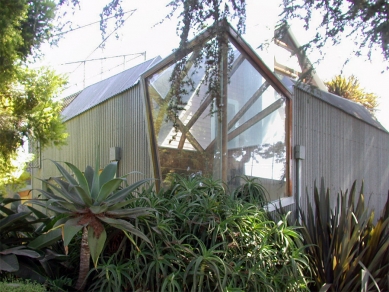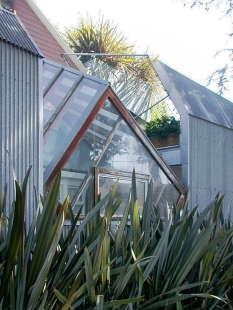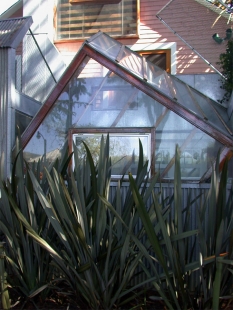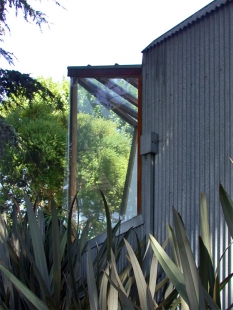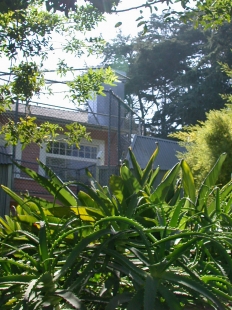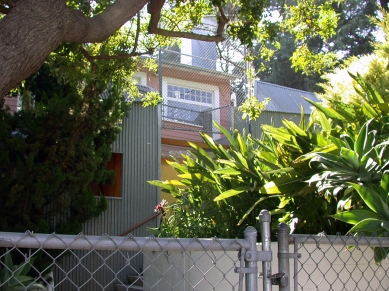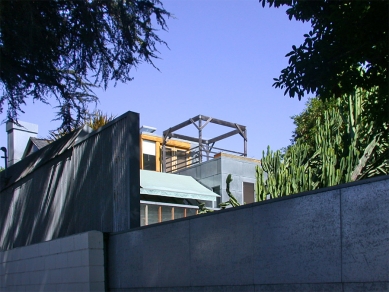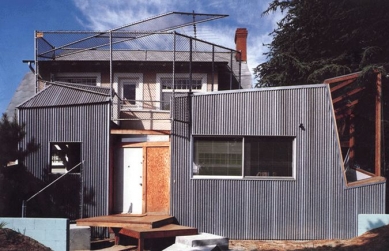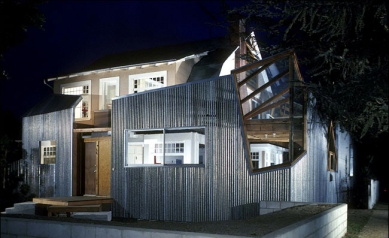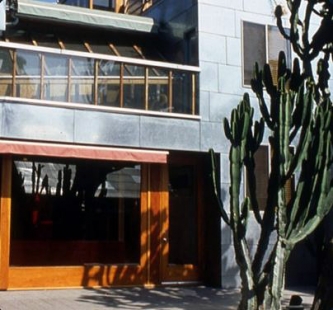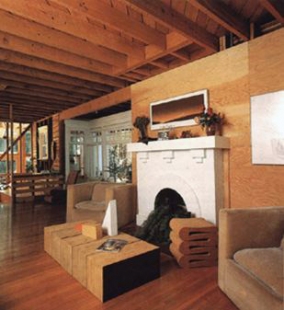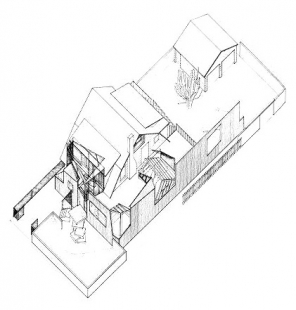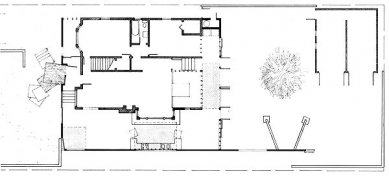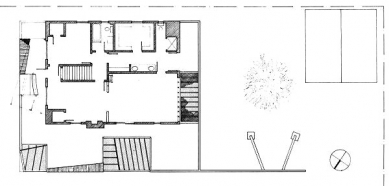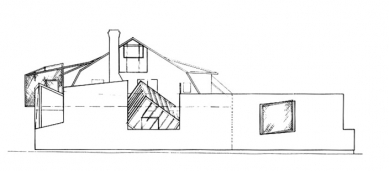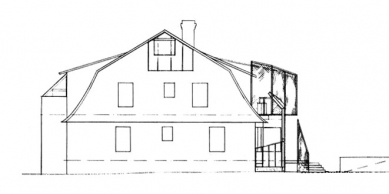
Gehry House

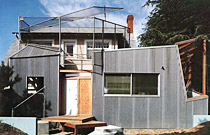 |
With the original house almost intact formwise, Gehry, in effect, lifted back the skin to reveal the building as layers, with new forms breaking out and tilting away from the original, to create a forerunner of the Deconstructionist spirit of the eighties. It is almost an idea of 'wrapping' à la Christo, but where Christo seeks through a veil to transform the original to a new sense of being and meaning, Gehry rather produces a discontinuous juxtaposition where one system collides with another resulting in, to quote Bernard Tschumi, a 'super position or disjunctive disassociation.' Where Johansen assembles technological-like elements freely seeding dialogue through the combination, Gehry, through collaging, also basically (but with a different aesthetic) derives an approach to design from the methodology and respect for construction and its architectonic potential as a form maker and space generator.
Paul Heyer: American Architecture: Ideas and Ideologies in the Late Twentieth Century, p228-230.
0 comments
add comment


